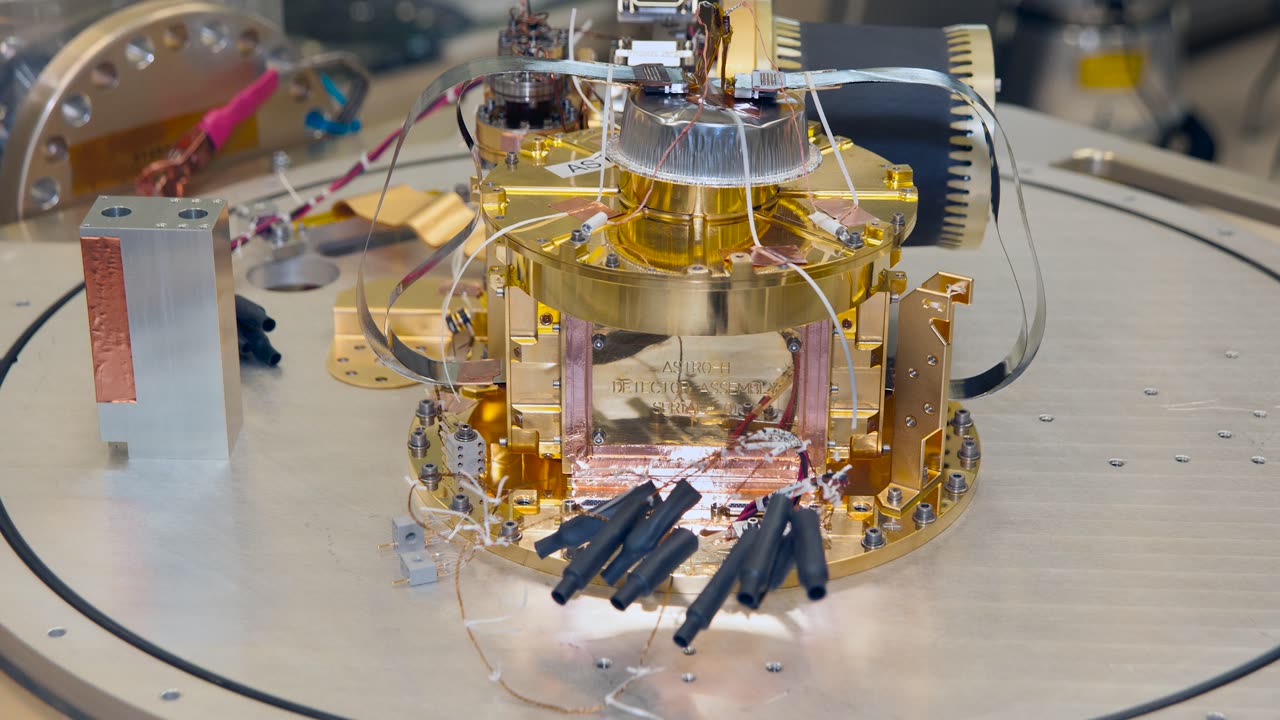Premium Only Content

Exploring the Hidden X-ray Cosmos
Watch this video to learn more about XRISM (X-ray Imaging and Spectroscopy Mission), a collaboration between JAXA (Japan Aerospace Exploration Agency) and NASA.
Credit: NASA's Goddard Space Flight Centre
Music Credits: Universal Production Music
Lights On by Hugh Robert Edwin Wilkinson
Dreams by Jez Fox and Rohan Jones
Changing Tide by Rob Manning
Wandering Imagination by Joel Goodman
In Unison by Samuel Sim
A powerful satellite called XRISM (X-ray Imaging and Spectroscopy Mission) is set to provide astronomers with a revolutionary look at the X-ray sky.
XRISM is led by JAXA (Japan Aerospace Exploration Agency) in collaboration with NASA and with contributions from ESA (European Space Agency).
XRISM detects X-rays with energies ranging from 400 to 12,000 electron volts. (For comparison, the energy of visible light is 2 to 3 electron volts.)
This range will provide astrophysicists with new information about some of the universe’s hottest regions, largest structures, and objects with the strongest gravity.
The mission has two instruments, Resolve and Xtend.
Resolve is a microcalorimeter spectrometer developed in collaboration between JAXA and NASA. When an X-ray hits Resolve’s 6-by-6-pixel detector, its energy causes a tiny increase in temperature. By measuring each individual X-ray’s energy, the instrument provides information about the source, such as its composition, motion, and physical state.
To detect these tiny temperature changes, Resolve must operate at just a fraction of a degree above absolute zero. It reaches this state in orbit after a multistage mechanical cooling process inside a refrigerator-sized container of liquid helium.
XRISM’s second instrument, Xtend, was developed by JAXA. It will give XRISM one of the largest fields of view of any X-ray imaging satellite flown to date, observing an area about 60% larger than the average apparent size of the full moon. The images it collects will complement the data collected by Resolve.
Each instrument is at the focus of an XMA (X-ray Mirror Assembly) designed and developed at Goddard.
X-ray wavelengths are so short, they can pass straight between the atoms of the dish-shaped mirrors used to capture visible, infrared, and ultraviolet light.
Instead, X-ray astronomers use nested curved mirrors turned on their sides. The X-rays skip off the surfaces like stones across a pond and into the detectors.
Each of XRISM’s XMAs houses hundreds of concentric, precisely shaped aluminum shells built in quadrants and assembled into a circle. In all, there are over 3,200 individual mirror segments in the two mirror assemblies.
After launch, XRISM will begin a months-long calibration phase, during which Resolve will reach its operating temperature.
-
 2:11:24
2:11:24
Tundra Tactical
11 hours ago $46.80 earnedTundra Nation Live - Tundra's Guns?? We Finally See What Tundra Shoots
37.5K4 -
 2:44:07
2:44:07
BlackDiamondGunsandGear
10 hours agoAFTER HOURS ARMORY / Whiskey & Windage
20.9K2 -
 23:56
23:56
marcushouse
19 hours ago $17.83 earnedStarship Began the Demolition!? 🔥
32.7K6 -
 17:59
17:59
JohnXSantos
1 day ago $4.41 earnedI Gave AI 14 Days to Build NEW $5K/MONTH Clothing Brand
20.9K3 -
 2:44:07
2:44:07
DLDAfterDark
9 hours ago $10.98 earnedGun Talk - Whiskey & Windage - The "Long Range" Jouney - After Hours Armory
26.2K1 -
 9:37
9:37
Film Threat
11 hours agoSHELBY OAKS REVIEW | Film Threat
16.7K6 -
 35:40
35:40
The Mel K Show
6 hours agoMel K & Dr. Mary Talley Bowden MD | Heroes of the Plandemic: Doing What is Right No Matter the Cost | 10-25-25
44.3K13 -
 3:06:20
3:06:20
FreshandFit
11 hours agoNetworking At Complex Con With DJ Akademiks
208K23 -
 7:02:27
7:02:27
SpartakusLIVE
9 hours agoThe King of Content and the Queen of Banter || Duos w/ Sophie
42.3K2 -
 1:47:12
1:47:12
Akademiks
9 hours agoLive on complexcon
41.7K5